#potential benefits of cabbage
Text
Unveiling the Potential Exploring the Link Between Cabbage and Cancer Risk
https://self-care-tips.com/post-details/unveiling-the-potential-exploring-the-link-between-cabbage-and-cancer-risk

#cabbage and cancer risk#link between cabbage and cancer#potential benefits of cabbage#cruciferous vegetables and cancer#cancer prevention diet#natural cancer prevention#dietary choices for health#cancer risk factors#healthy lifestyle habits
0 notes
Text
Superfoods you should incorporate in your diet:
Superfoods are nutrient-dense foods that are considered beneficial for your health due to their high concentration of vitamins, minerals, antioxidants, and other beneficial compounds.
Combine these superfoods with a variety of other whole foods to ensure you're getting a wide range of nutrients. Also, be mindful of portion sizes and any individual dietary restrictions or allergies you may have.
Berries: Blueberries, strawberries, raspberries, and other berries are rich in antioxidants, fiber, and vitamins.
Leafy greens: Spinach, kale, Swiss chard, and other leafy greens are packed with vitamins, minerals, and fiber. They are low in calories and provide important nutrients like vitamin K, vitamin C, and folate.
Cruciferous vegetables: Broccoli, cauliflower, Brussels sprouts, and cabbage are part of the cruciferous vegetable family. They contain compounds that may help reduce the risk of certain cancers.
Nuts and seeds: Almonds, walnuts, chia seeds, flaxseeds, and hemp seeds are excellent sources of healthy fats, protein, fiber, and various vitamins and minerals.
Fish: Fatty fish like salmon, sardines, and mackerel are rich in omega-3 fatty acids, which are beneficial for heart health and brain function.
Whole grains: Quinoa, brown rice, oats, and whole wheat are examples of whole grains that provide fiber, vitamins, and minerals.
Legumes: Beans, lentils, chickpeas, and other legumes are high in fiber, protein, and various nutrients. They are also a good source of plant-based protein.
Turmeric: This spice contains curcumin, a compound with potent anti-inflammatory and antioxidant properties.
Green tea: Green tea is rich in antioxidants called catechins and is believed to have various health benefits, including improved brain function and a lower risk of certain diseases.
Dark chocolate: Dark chocolate with a high cocoa content (70% or higher) is a source of antioxidants and may have positive effects on heart health and mood.
Avocado: Avocados are rich in healthy fats, fiber, and various vitamins and minerals. They also provide a good source of potassium.
Greek yogurt: Greek yogurt is a protein-rich food that also contains beneficial probiotics, calcium, and vitamin B12.
Sweet potatoes: Sweet potatoes are packed with vitamins, minerals, and fiber. They are an excellent source of beta-carotene, which is converted into vitamin A in the body.
Garlic: Garlic contains sulfur compounds that have been associated with potential health benefits, including immune support and cardiovascular health.
Ginger: Ginger has anti-inflammatory properties and is commonly used to aid digestion and relieve nausea.
Seaweed: Seaweed, such as nori, kelp, and spirulina, is a rich source of minerals like iodine, as well as antioxidants and omega-3 fatty acids.
Pomegranate: Pomegranates are packed with antioxidants and are believed to have anti-inflammatory properties. They are also a good source of vitamin C and fiber.
Cacao: Raw cacao is the purest form of chocolate and is rich in antioxidants, flavonoids, and minerals. It can be enjoyed as nibs, powder, or in dark chocolate form.
Quinoa: Quinoa is a gluten-free grain that provides a complete source of protein, along with fiber, vitamins, and minerals.
Extra virgin olive oil: Olive oil is a healthy fat option, particularly extra virgin olive oil, which is high in monounsaturated fats and antioxidants.
Chia seeds: Chia seeds are a great source of fiber, omega-3 fatty acids, and antioxidants. They can be added to smoothies, yogurt, or used as an egg substitute in recipes.
Beets: Beets are rich in antioxidants and are known for their vibrant color. They also contain nitrates, which have been shown to have beneficial effects on blood pressure and exercise performance.
Matcha: Matcha is a powdered form of green tea and is known for its high concentration of antioxidants. It provides a calm energy boost and can be enjoyed as a tea or added to smoothies and baked goods.
Algae: Algae, such as spirulina and chlorella, are nutrient-dense foods that are rich in protein, vitamins, minerals, and antioxidants. They are often consumed in powdered or supplement form.
Fermented foods: Fermented foods like sauerkraut, kimchi, kefir, and kombucha are rich in beneficial probiotics that support gut health and digestion.
Maca: Maca is a root vegetable native to the Andes and is often consumed in powdered form. It is known for its potential hormone-balancing properties and is commonly used as an adaptogen.
Goji berries: Goji berries are small red berries that are rich in antioxidants, vitamins, and minerals. They can be enjoyed as a snack or added to smoothies and oatmeal.
Hemp seeds: Hemp seeds are a great source of plant-based protein, healthy fats, and minerals like magnesium and iron. They can be sprinkled on salads, yogurt, or blended into smoothies.
Moringa: Moringa is a nutrient-dense plant that is rich in vitamins, minerals, and antioxidants. It is often consumed as a powder or used in tea.
Mushrooms: Certain mushrooms, such as shiitake, reishi, and maitake, have immune-boosting properties and are rich in antioxidants. They can be cooked and added to various dishes.
#health tips#healthy lifestyle#health and wellness#nutrients#healthy life tips#healthy life hacks#healthy diet#level up journey#high value mindset#health is wealth#levelupjourney#glow up tips#glow up#nutrition#healthy living
2K notes
·
View notes
Text

Kimchi is a traditional Korean dish made from fermented vegetables, most commonly cabbage and radishes, along with a variety of seasonings and spices. This fermented food offers a range of health benefits due to its probiotic content, as well as the nutrients and antioxidants found in the vegetables and seasonings. Some of the potential benefits of kimchi include:
1. Probiotic support: Kimchi is rich in beneficial probiotic bacteria, such as Lactobacillus, which can help promote a healthy balance of gut microbiota. Consuming kimchi regularly may support digestion, improve gut health, and strengthen the immune system.
2. Digestive health: The probiotics in kimchi can aid in digestion, promote nutrient absorption, and support overall digestive health. Kimchi can help maintain a healthy gut environment, reduce inflammation, and alleviate digestive issues such as bloating, gas, and indigestion.
3. Immune system support: A healthy gut microbiome is linked to a strong immune system. The probiotics in kimchi can help enhance immune function, reduce inflammation, and support overall immune health.
4. Nutrient-rich: Kimchi is a good source of vitamins A, B vitamins, vitamin C, and minerals like calcium, iron, and potassium. These nutrients are essential for overall health, immune function, and energy metabolism.
5. Antioxidant properties: The vegetables and seasonings used in kimchi contain antioxidants that help protect cells from damage caused by free radicals and oxidative stress. Antioxidants can help reduce inflammation, support heart health, and promote overall well-being.
6. Weight management: Some studies suggest that the probiotics and fiber found in kimchi may help support weight management by promoting a healthy gut microbiome, improving digestion, and enhancing nutrient absorption.
7. Heart health: The fiber, probiotics, and antioxidants in kimchi may help support heart health by lowering cholesterol levels, reducing inflammation, and promoting cardiovascular health.
Incorporating kimchi into your diet as part of a balanced and varied meal plan can provide a range of health benefits. It's important to choose traditionally fermented kimchi to ensure the presence of live probiotic cultures. As with any food, moderation is key, and individual responses to kimchi may vary.
#food for thought#food fight#comfort food#fast food#healthy food#food photography#foodie#food#foodpics#foodlover#japanese food#foodmyheart#tw food#lunch recipes#pasta recipes#pasta recipe#salad recipes#soup recipe#recipe#reciprocity#recipies#healthy salad recipes#recipes#cozy fall#cozyhome#cozy cozy#cozy living#good soup#autumn cozy#cozy art
20 notes
·
View notes
Note
This is gonna be literally so long that I’m gonna have to send it in different parts, but here’s my advice for binging that worked for me personally, bc I struggle with it too. I’m sending u love and wishing the best for u, please stay safe and try to be kind to urself especially in the hard moments 🤍 I know we’re all on here for a reason but I’m truly wishing the best for u and that ur able to find a healthy balance :)<3
Similar to what the other person said, if u know ur prone to binging, extreme restriction will NOT help. Restriction like that will only lead to binges and it has the potential to be a horrible & seemingly endless cycle (but nothing lasts forever even binge/restrict cycles!) Ur cal count will be different depending on what works for u, but it’s also important that when u eat u eat things that fill u up! So protein sources (tempeh is my faveee if u can handle soy- it’s fermented so if u cook it correctly it has probiotics which are great for ur gut health, I’m vegan but when I wasn’t, chicken was my go to every time- it’s a lean protein source so VERY low in fat compared to meats like beef, but pls make sure ur getting good quality chicken and not fast food chicken like chick fil a, in general quality is much more important than calories and yes that goes for things like Diet Coke too lol) eat lots of vegetables because fiber is greattt and veggies will rlly fill u up without adding too much to ur calorie count! Some of my favs are carrot, zucchini, cabbage, broccoli and more. Eating ur greens can be really fun I promise!!! I recommend cooking at home as much as possible, if u have the ability to. Ur quality will always be better and u might develop a different appreciation for food when u make it urself! Plus it’s just sooo fun!!! Eat a lot of fruit too. Like literally do not limit ur fruit intake but just eat a lot of different fruits! I personally love all berries (raspberries <3) and mango, but I recommend adding pears and kiwi to ur daily diet. If u have the ability to juice, try that sometimes, especially if u don’t really like vegetables- but if u have to worry about blood sugar, be careful w/ adding too much fruit as when u consume juice, the fruit loses the fiber that makes it so that ur blood sugar doesn’t spike when u eat fruit in its whole form. In general it’s best to add much more veggies than fruit to ur juice, but adding things like a couple grapefruits to ur juice will balance out the “green” flavor if ur not into that! I also recommend making smoothies and smoothie bowls if u are able! It’s very important to get variety in ur diet too so that when u do eat, ur getting many different nutrients, and not just eating the same 3 foods over n over (although I know for people with ed or at least me it can be really challenging to not just stick to the same safe foods every day😭) some other things I recommend eating are sprouts and herbs. So many health benefits for so little calories! EXERCISE EXERCISE EXERCISE!!! Even walking a little bit every day is soooo beneficial!! Stay as active as you can, my #1 recommendation would be walking outside like if u have a park or woods near u, getting movement while connecting with nature is sooo important and at least to me, feels sm better than just walking on an indoor treadmill or pacing around my house 24/7. I like to sometimes bring a snack like fruit or trail mix with me and eat outside. Also, try getting rid of as many snack foods as u realistically can, it’s WAY easier to binge when u can just grab something out of the pantry and go to town immediately. I suggest replacing as many snacks as u can with fruit and nuts - nuts in moderation ! :))
Love, 🤍
thank you so much, jesus christ 😭 thats actually super super helpful, thank you!!
3 notes
·
View notes
Text
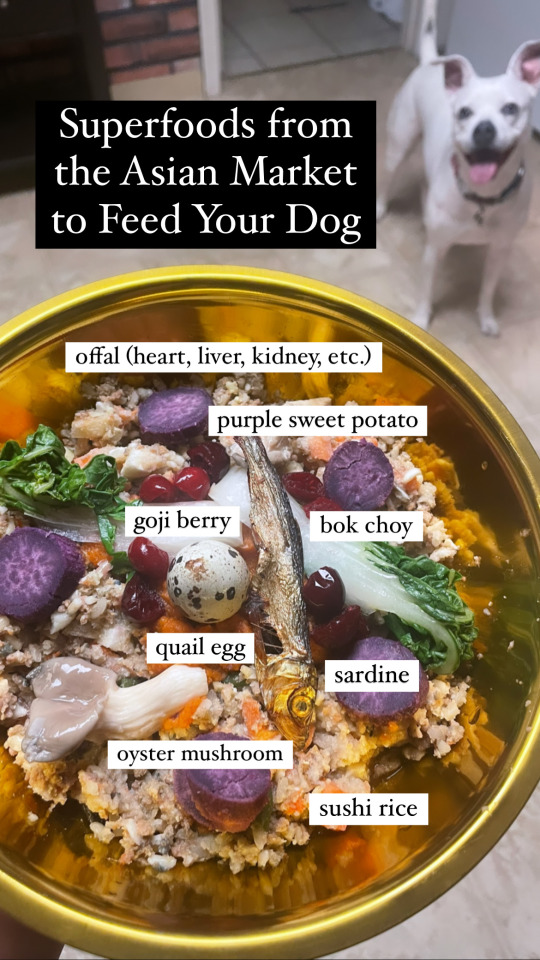
These past few years, I have become a huge advocate for feeding fresh food to dogs to enhance their lives. However, you don't exactly have to transition your dog to a 100% fresh food diet in order to gain the benefits of fresh food.
Simply adding fresh food to your dog's kibble can go a long way in improving their nutrition and overall health. For instance, one study done a group of dogs in 2005 revealed that feeding vegetables just three times a week had significantly lowered their risk of developing cancer, compared to dogs who were only fed kibble.
Asian markets, in particular, have some very beneficial fresh food items that aren't typically found at your local grocery store. These food items, however, are not intended to fully replace your dog's food. Remember - too much of something good can be bad for you.
Instead, they should be offered in moderation as treats, or just small amounts topped over an already complete and balance meal. As a general rule of thumb, treats/toppers should never make more than 10% of your dog's overall diet.
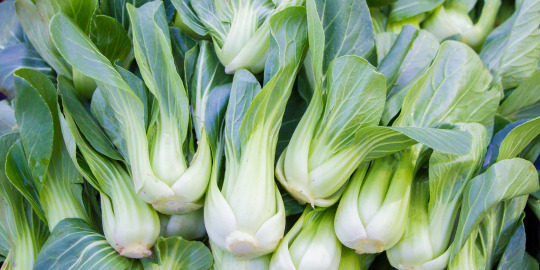
Bok choy (Chinese cabbage) is full of essential vitamins and minerals needed to support a dog’s eyesight, cardiac function, digestion, bone strength, and immunity. Sulfurophane - a compound found in bok choy and other cruciferous vegetables - has been linked to inhibiting cancer cell growth, lowering blood pressure, and activating the nuclear factor Nrf2 which prevents the development of diabetes and its complications. Bok choy’s low calorie, high fiber content also make it a good option for a snack/food topper for dogs who need to control their weight.
Preparation: Lightly steam or boil for better nutrient absorption. Cooking will also help neutralize the enzyme (myrosinase) that can decrease thyroid function. You should also chop/trim their long leaves to avoid choking hazards.
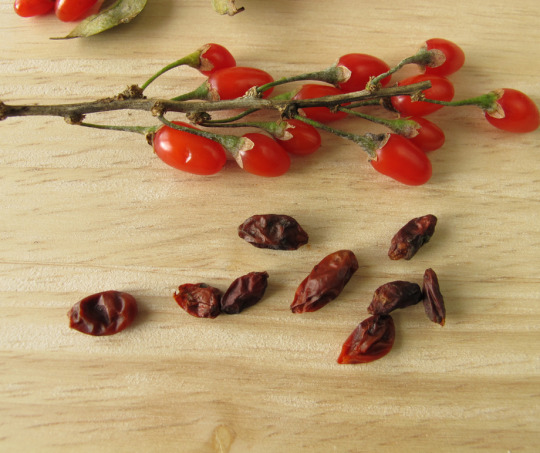
Goji berries (wolfberries) are rich in amino acids, carotenoids which support healthy vision, and polyphenols that have anti-inflammatory, anti-tumor, and cardio-protective properties. Studies on goji berry supplementation in animals have shown that it has the potential to help lower cholesterol, protect the liver by increasing hepatic antioxidant activity, as well as enhance metabolic homeostasis and prevent diabetes-induced renal inflammation.
Preparation: Remove stems if still attached and cut/mash berries. If dried, soak in water until softened to avoid passing straight through the GI tract and losing the benefits of its nutrients.

Offal refers to the internal organs and variety meats of animals that can be consumed as food (i.e. lung, heart, kidney, liver, gizzard, head, feet, etc.) The word 'offal' literally translates to "fall off", and thus, whatever falls off the skeleton during the butchering process. Offal is densely loaded with essential vitamins, minerals, proteins, and fats - so small amounts go a long way. Pet owners who use these as ingredients as part of a complete and balanced recipe should keep in mind that each organ is unique in its nutrient profile - dependent on the animal it is sourced from and how it is raised. For example, grass-fed beef may contain less fat yet more vitamin A and E than grain-fed beef, and beef liver has significantly more vitamin A and copper than chicken liver.
Preparation: Boil in water or low-sodium broth. May also be baked or dehydrated into jerky treats.
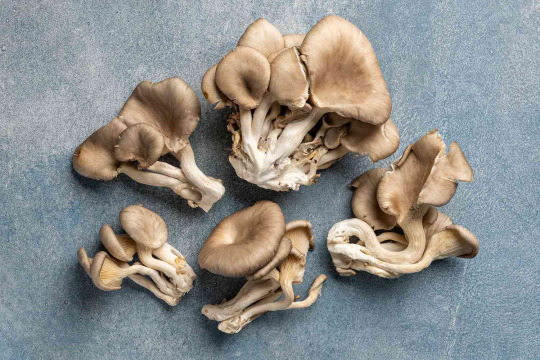
Oyster mushrooms are a good source of protein and fiber, and vitamins that support healthy digestion. They can help to increase satiety and maintain healthy body weight. Oyster mushrooms are also full of pantothenic acid which help to maintain cognitive function and healthy skin/coat. Beta-glucans derived from oyster mushrooms have also been shown to reduce inflammation and strengthen immunity.
Preparation: Lightly sauté or boil in water or low-sodium broth. Raw or dried mushrooms can be difficult for dogs to digest.

Purple sweet potato (Ube or Okinawan sweet potato) are typically found in grocery stores more commonly during the fall/winter seasons. They contain more antioxidants than regular sweet potatoes due to the anthocyanins that cause their violet hue. While all potato varieties may impact blood sugar levels because of their high carbohydrate content, purple potatoes may exert less of an effect because of their high polyphenol content that decreases the absorption of starches in the intestines. In addition, they have been linked to improving blood pressure, likely due to their high potassium content.
Preparation: Peel skin and bake until soft for better digestibility and to prevent intestinal blockages. May be boiled and drained to reduce oxalate intake for dogs with a history of bladder stones, or prone to urinary issues.
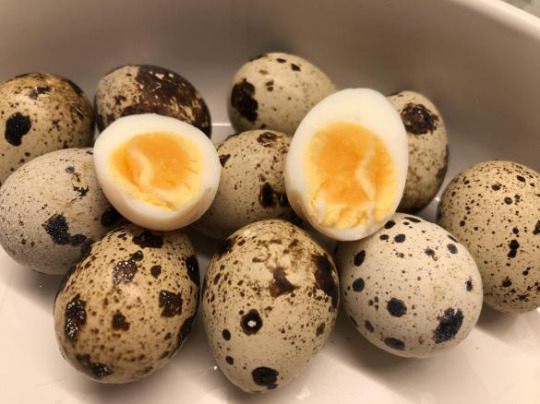
Quail eggs are small, yet packed with protein and essential fatty acids, and have a higher ratio of iron, riboflavin, and vitamin b12 than chicken eggs. It is even safe and can be beneficial to feed them with the shells included for added calcium. Quail eggs have been linked to improving bone growth/healing, reducing liver damage, and increasing energy levels. While some studies have shown evidence of quail eggs treating allergies in humans and mice, they may be less likely to trigger reactions than chicken eggs in dogs who have poultry sensitivities.
Preparation: Wash thoroughly, and handle gently as they are more fragile due to their tiny size. Cooking methods are similar to that of chicken eggs, yet require less time.

Sardines contain all the amino acids your dog needs for optimal health, making it a "complete protein". They are also notorious for being rich in omegas and coenzyme q-10, which help support heart and brain health. What sets sardines apart from other fish, too, is that they are smaller and more short-lived species than larger predator fish and may have less of a risk for mercury poisoning. Because they are so small and have soft bones, you can feed them whole to your pets.
Preparation: Bake or dehydrate. If already purchased as dried, be sure to make sure there is no added salt or seasonings. If canned, preferably those stored in water only.

Sushi rice (Japanese sticky rice) has a high proportion of starch and moisture, giving it a stickier texture when cooked. Sushi rice has virtually zero fat, yet still provides a desirable balance of nutrients while remaining gentle on a dog’s digestive tract. Its higher iron content than regular rice supports healthy blood circulation and can provide more energy to dogs who are recovering from illness. Cooling/refrigerating the rice before serving also enables more retrogradation of prebiotic fiber, helping to lower glycemic responses and maximize intestinal function.
Preparation: Rinse thoroughly and soak in water (with 1tbsp apple cider vinegar - optional) before cooking. If you don’t have a rice cooker or instant pot, boil on the stove until the water is completely absorbed. May be cooked with bone broth for added flavor. You can also use small amounts of beet root powder, turmeric, or blue spirulina to add color and nutrients.
#asian markets#pet food#dog treats#bok choy#goji berries#offal#oyster mushrooms#quail eggs#sardines#sushi rice#purple sweet potato
7 notes
·
View notes
Text
How to Choose the Right Kitchen Renovation at Toronto Custom Kitchen

Embarking on a kitchen renovation in Toronto is a significant endeavor, especially when opting for a custom approach that allows you to tailor your culinary space to perfection. The city's diverse architectural styles and cultural influences make the prospect of a custom kitchen both exciting and challenging. In this guide, we'll explore the key considerations to help you choose the right kitchen renovation for your Toronto custom kitchen, ensuring a seamless and satisfying transformation.
Define Your Objectives: Before delving into the world of kitchen renovations, clearly define your objectives. What do you hope to achieve with your custom kitchen? Are you looking for increased functionality, a more modern aesthetic, or simply a better layout? Understanding your goals will guide the decision-making process and help you communicate your vision effectively to designers and contractors.
Assess Your Budget: Toronto is a city where the cost of living can be high, and kitchen renovations are no exception. Establish a realistic budget that encompasses all aspects of the project, including materials, labor, permits, and potential unforeseen expenses. Setting a clear budget from the outset will ensure that your custom kitchen renovation aligns with your financial capabilities.
Research Design Styles: Toronto's neighborhoods showcase a diverse range of design styles, from the classic Victorian homes in Cabbage town to the sleek modern residences in the Entertainment District. Explore different design styles to identify what resonates with your taste. Consider factors such as color schemes, materials, and layouts that harmonize with the overall aesthetic you envision for your custom kitchen.
Seek Professional Guidance: Collaborating with design professionals is crucial when undertaking a custom kitchen renovation in Toronto. Look for experienced designers who understand the city's unique architectural nuances. A skilled designer will help you navigate through various design possibilities, ensuring your vision is both aesthetically pleasing and practical for everyday use.
Explore Local Trends: Toronto's design landscape is dynamic, with trends evolving over time. Stay informed about local design trends by visiting showrooms, attending home expos, and exploring design blogs specific to the city. This awareness will help you make informed decisions, ensuring your custom kitchen remains stylish and relevant within the Toronto context.
Consider the Layout: The layout of your kitchen is a critical aspect that directly impacts functionality. Work closely with your designer to create a layout that optimizes space, streamlines workflow, and caters to your specific needs. Toronto kitchens, often central to daily life, benefit greatly from layouts that encourage a seamless blend of cooking, dining, and socializing.
Choose Quality Materials: Toronto homeowners appreciate quality, and this should extend to the materials chosen for your custom kitchen. Opt for durable countertops, cabinets, and flooring that withstand the demands of daily use. Quality materials not only enhance the longevity of your kitchen but also contribute to its overall appeal and value.
Incorporate Smart Storage Solutions: Toronto's diverse culinary scene often means a wide array of ingredients and kitchen gadgets. To make the most of your custom kitchen, incorporate smart storage solutions that maximize space and keep your kitchen organized. Custom cabinets, pull-out shelves, and innovative pantry systems can significantly enhance the functionality of your kitchen.
Energy Efficiency: Toronto places a strong emphasis on sustainability, making energy-efficient choices a key consideration for your custom kitchen. opt for appliances with high Energy Star ratings to minimize your environmental impact and potentially reduce long-term utility costs. This aligns with the city's commitment to green living.
Review and Refine: Before finalizing your custom kitchen renovation plans, take the time to review and refine the design. Seek feedback from professionals, friends, and family to ensure that your vision aligns with practical considerations. This iterative process will result in a well-thought-out plan that meets both your aesthetic preferences and functional requirements.
Conclusion:
Choosing the right kitchen renovation for your custom kitchen in Toronto is a multi-faceted process that requires careful consideration of design, functionality, toronto kitchen renovation, toronto custom kitchens and budget. By defining your objectives, seeking professional guidance, and staying attuned to local trends, you can embark on a transformative journey that culminates in a custom kitchen perfectly tailored to your taste and the vibrant spirit of Toronto.
2 notes
·
View notes
Text
Joan D'Alessandro remembered as family's fight for child abuse victims marks 50 years




McGowan, who would later admit to the killing, wrapped her body, loaded it into his car and drove to Stony Point at the edge of Harriman State Park in Rockland County, New York, where Joan's body was found three days later, on Easter Sunday. Frederick Zugib, then the medical examiner for Rockland County, called the case one of the most brutal crimes he had investigated.





Rosemarie's staunch resistance to McGowan's potential release moved the still-grieving mother to ensure other families would not have to suffer the same trauma of fearing that their child's attacker would again be among the general population.
In 1997, she successfully lobbied for the passage of what came to be known as Joan's Law, which repealed parole eligibility for any detainees convicted of sexually assaulting or killing a child under age 14. The next year, federal lawmakers passed a similar rule.

Picture: On Easter Sunday, three days after she disappeared, Joan's small body was found in Harriman State Park in New York
McGowan remained grandfathered into his sentence and was never subject to the new rule. Yet he never benefited from the carve-out and died in 2021 while serving a life sentence at South Woods State Prison, four years before he would have been up for parole yet again.
"She was a leader," said Olivia Galgano, who taught Joan's ballet class and five decades later can still vividly recall the waifish girl. "Often, I would say we have to line up and she would run to be first."
Mere months after McGowan's death, the Bergen County Prosecutor's Office cut the ribbon on "Rosemarie's Room," a new extension to the office's Child Advocacy Center in Paramus, where law enforcement, medical and mental health professionals can tackle allegations of child abuse. Jason Love, then the chief detective of the office, described the expansion as a "safe place for our children to whisper their secrets."
It was allegedly the whisper of a secret that was McGowan's undoing. As Tobin continued to recount the investigation into Joan's death Wednesday at the Hillsdale train station, he said that as investigators grilled McGowan for the second time, probing his involvement in the savage killing, their suspect continued to deny any part in what occurred. As their scrutiny grew closer to the truth, he did not request an attorney, but a priest, Tobin said. Offering him the same privilege as they would someone in a confession booth, the detectives stepped out while McGowan spoke with the cleric. On his way out of the interrogation room, Tobin said, the priest turned to the officers and told them, "Fellas, keep questioning him."
Rosemarie details her fight to keep Joan's memory alive in a soon-to-be-released book, "The Message of Light Amid Letters of Darkness." Proceeds from the book's sale will benefit the Joan Angela D'Alessandro Foundation, which advocates for child victims of abuse.
In the D'Alessandro home, Joan's memory is very much alive. Colorfully painted rooms are adorned with photos of the spry, auburn-haired little girl who had a magnetic personality. Her bronzed ballet slippers and favorite trinkets sit atop shelves. And drawings of butterflies she carefully colored are framed and hung on the wall. The butterfly has become symbolic to D'Alessandro and is integral to Joan's garden in the center of her hometown in Hillsdale, New Jersey. The second time Rosemarie returned to the site Joan's body had been found, a white flicker caught her eye. It was a white cabbage butterfly that greeted her as she approached the boulder with a crevice.
2 notes
·
View notes
Text
The Health Benefits of Fermented Green Tea Drink and Traditional Korean Kimchi
In recent years, fermented foods and beverages have experienced a surge in popularity due to their potential health benefits. Among the most renowned of these are fermented green tea drinks and traditional Korean kimchi, both staples of East Asian diets. These foods are not only rich in flavor but also pack a powerful punch when it comes to supporting gut health, boosting immunity, and enhancing overall well-being.
Let’s delve deeper into the world of fermented green tea drinks and traditional Korean kimchi to understand their unique properties and how they contribute to a healthy lifestyle.
Fermented Green Tea Drink: A Probiotic Powerhouse
Fermented green tea drinks, such as kombucha and nokcha-cha, have long been revered for their detoxifying and revitalizing properties. Green tea itself is rich in antioxidants, particularly catechins, which are known for their ability to combat free radicals in the body. When fermented, green tea becomes even more potent, as the fermentation process increases the bioavailability of its nutrients and introduces probiotics.
The Fermentation Process
Fermentation is the key that unlocks the additional health benefits of green tea. During fermentation, sugar is consumed by bacteria and yeast, resulting in a drink that is slightly effervescent and tangy. Kombucha, one of the most popular fermented green tea drink, is brewed by introducing a symbiotic culture of bacteria and yeast (SCOBY) into a mixture of sweetened green tea. The bacteria and yeast work together to convert the sugars into organic acids, vitamins, and enzymes.
The result? A refreshing beverage that not only satisfies the taste buds but also promotes gut health. The probiotics present in fermented green tea drinks, such as Lactobacillus and Acetobacter, help maintain a healthy balance of gut flora, which plays a crucial role in digestion, immunity, and even mental health.
Health Benefits
Gut Health: The probiotics in fermented green tea drinks improve digestion by enhancing the population of good bacteria in the gut. This leads to better nutrient absorption and may help prevent issues like bloating, constipation, and diarrhea.
Detoxification: Kombucha, in particular, contains glucuronic acid, a compound that binds to toxins in the body and helps eliminate them through urine. This detoxification process supports liver function and overall health.
Antioxidant Boost: Fermented green tea retains all the antioxidants of regular green tea but makes them more bioavailable. These antioxidants, particularly EGCG (epigallocatechin gallate), help combat oxidative stress, reduce inflammation, and may lower the risk of chronic diseases such as cancer and heart disease.
Immune Support: The combination of antioxidants and probiotics strengthens the immune system. A healthy gut microbiome is closely linked to a robust immune response, making fermented green tea an excellent choice for overall health maintenance.
Traditional Korean Kimchi: A Flavorful Superfood
If there is one dish that symbolizes the culinary and cultural heritage of Korea, it’s kimchi. Kimchi is a traditional Korean fermented vegetable dish, most commonly made with napa cabbage and Korean radish, though countless regional and family variations exist. The fermentation process is what gives kimchi its signature sour taste, transforming simple ingredients into a nutrient-dense powerhouse.
What’s in Kimchi?
Traditional Korean kimchi is made with a mix of napa cabbage, Korean radish, garlic, ginger, chili powder, scallions, and fermented seafood, such as jeotgal (salted shrimp) or fish sauce. These ingredients are packed with vitamins, minerals, and phytochemicals that support various aspects of health. Fermentation typically lasts for several days to weeks, depending on the temperature and personal preferences, allowing the vegetables to develop their distinctive tangy flavor and probiotic content.
Health Benefits of Kimchi
Rich in Probiotics: Kimchi is a natural source of probiotics, particularly strains likeLactobacillus plantarum and Lactobacillus brevis, which promote gut health. These beneficial bacteria not only aid digestion but also boost the immune system and help in nutrient absorption.
Antioxidants and Anti-inflammatory Properties: The vegetables and spices used in kimchi are rich in antioxidants, which help combat free radicals and reduce inflammation. Ginger and garlic, two mainstays of kimchi, are well-known for their anti-inflammatory and antimicrobial properties.
High in Fiber and Low in Calories: Kimchi is a low-calorie food packed with dietary fiber, which promotes satiety and helps with weight management. Fiber is also crucial for maintaining healthy bowel movements and preventing constipation.
Boosts Immune Function: The fermentation process enhances the bioavailability of certain nutrients, including vitamin C and beta-carotene, both of which are essential for a strong immune system. Additionally, the probiotics in kimchi contribute to immune health by maintaining the integrity of the gut lining.
May Support Heart Health: Kimchi contains compounds that may help regulate cholesterol levels and improve blood pressure. Studies have shown that fermented foods like kimchi can reduce LDL cholesterol (the "bad" cholesterol) while increasing HDL cholesterol (the "good" cholesterol).
How to Enjoy Kimchi
Kimchi is an incredibly versatile food. It can be eaten on its own as a side dish, mixed into fried rice or soups, or used as a topping for burgers and tacos. Its bold flavor adds depth to a wide range of dishes, making it a favorite among food enthusiasts worldwide.
The Perfect Pair: Fermented Green Tea Drink and Kimchi
When combined, fermented green tea drinks and traditional Korean kimchi offer a potent combination of probiotics, antioxidants, and anti-inflammatory compounds. Both of these fermented foods work synergistically to support digestive health, strengthen the immune system, and promote overall well-being. Incorporating these into your diet is not only a great way to boost gut health but also to enjoy a unique culinary experience rooted in centuries of tradition.
Fermented green tea drinks and traditional Korean kimchi are more than just trendy superfoods—they are ancient staples with a long history of supporting health and vitality. The fermentation process enhances their nutritional value, making them rich in probiotics, antioxidants, and essential nutrients. Whether you’re looking to improve gut health, support your immune system, or simply add some zest to your meals, these fermented foods are worth exploring.
So why not make fermented green tea and kimchi a part of your diet? Your gut—and your taste buds—will thank you!
0 notes
Text
🖌️ DIY Food Coloring: Easy Homemade Recipes 🌈

Looking for a fun and natural way to add color to your dishes? 🌿 In this guide, you'll discover simple ways to make your own food coloring at home using everyday kitchen ingredients. Say goodbye to artificial additives and hello to a rainbow of vibrant, natural hues! 🌈🍴
🥕 Why Make Your Own Food Coloring? 🍓
Making your own natural food dyes is both rewarding and practical. By choosing homemade, plant-based food colorants, you control the ingredients, helping you avoid artificial additives that could be unhealthy. 🥦
💚 Benefits of Homemade Food Dyes
Vibrant Colors: Enhance your dishes with natural, bright hues.
Customizable Shades: Tailor colors to your specific needs.
Peace of Mind: Know exactly what's in your food! 🧁
"Homemade food dyes not only provide stunning colors but also help you avoid the potential health risks of artificial additives."
🧪 Understanding the Basics of DIY Food Coloring 🎨
Creating your own food coloring is fun and rewarding. Here’s what you need to know before getting started:
🌱 Why Choose Natural Food Coloring?
Natural food coloring is a healthier alternative to artificial dyes, often petroleum-based. With natural ingredients, you avoid the risks associated with artificial options, while also enjoying unique, natural tints. 🌻
🍲 Essential Tools and Ingredients
Tools: Blender, fine mesh strainer, small saucepans, airtight containers.
Ingredients: Fruits, veggies, and spices like turmeric, beets, spinach, and blueberries.
🥗 Creating Vibrant Colors from Fruits and Vegetables 🍇
Making food coloring from fruits and veggies is easier than you think! 🌽
Fruits: Blend or juice, then strain for colors like deep red (beets) or bright red (pomegranates). 🍒
Vegetables: Cook and blend for colors like orange (carrots) or green (spinach). 🥕
Combining Ingredients: Mix different juices for unique shades. 🎨
🍵 Powder vs. Liquid: Which Base to Use? 🥄
You can choose between powdered and liquid food coloring:
Powdered Food Coloring: Easy to store with a long shelf life.
Liquid Food Dyes: Perfect for rich hues and intense colors.
🥣 Step-by-Step Recipes for Homemade Food Coloring 🥄
Red/Pink: Use beets or hibiscus powder.
Yellow/Orange: Try turmeric or annatto seeds.
Green/Blue: Spinach for green, butterfly pea flowers for blue.
Purple/Black: Red cabbage for purple, activated charcoal for black.
🎂 Tips for Using Homemade Food Coloring in Baking 🍪
In Frosting and Icing: Start with a small amount and add gradually.
In Baked Goods: Mix the dye into wet ingredients for even color.
Storage: Keep dyes in sealed containers and refrigerate when necessary.
🛠️ Troubleshooting Common Issues 🚨
Color Fading: Store in airtight containers away from sunlight.
Unwanted Flavors: Use mild-tasting ingredients.
Texture Problems: Adjust the amount of liquid or switch to powdered dye.
🎉 Conclusion 🎉
Making your own food coloring is not just healthier but also adds a personal touch to your cooking. With simple ingredients like fruits and veggies, you can create vibrant, natural colors free from artificial additives. So next time you need to color your food, try making it yourself! 🌱✨
For more information in the field of health and well-being consult my blog : https://www.biohealthly.com/
#DIYFoodColoring#NaturalDyes#HealthyCooking#HomemadeColoring#EatTheRainbow#FoodFun#HealthyLiving#CleanEating
0 notes
Text

🌱 Unlock the Power of Cruciferous Vegetables! 🌱
Discover how Indole-3-Carbinol (I3C), a natural compound found in broccoli, cauliflower, and cabbage, can boost your immune system, fight cancer, and protect your brain. This compound could be key to better health and disease prevention. Dive into the full article to learn more about its potential benefits!
Read more here: https://piracetam.net/indole-3-carbinol-i3c/
#Health #Wellness #Nutrition #ImmuneBoost #CancerResearch
0 notes
Text
Phytonutrients: Understanding Plant-Based Nutrients and Their Health Benefits

Phytonutrients, also known as phytochemicals, are naturally occurring compounds found in plant foods like fruits, vegetables, whole grains, legumes, nuts, and seeds. They help protect plants from damage and are believed to provide health benefits to humans. There are thousands of identified phytochemicals, each contributing to unique flavors, aromas and colors in plant foods. Some well-known types of phytochemicals include carotenoids, flavonoids, phenolic acids, phytoestrogens and sulfur compounds.
Carotenoid Benefits
Carotenoids are bright yellow, red and orange pigments acting as powerful antioxidants. The most widely recognized carotenoids are beta-carotene, lycopene, lutein and zeaxanthin. Beta-carotene can be converted into vitamin A in the body and is thought to promote eye and skin health. Lycopene is associated with reduced cancer and heart disease risk. Lutein and zeaxanthin concentrate in the macula of the eye where they help protect against age-related macular degeneration and cataracts. Top sources of carotenoids include sweet potatoes, carrots, pumpkins, tomatoes and leafy greens.
Flavonoids for Heart and Brain Health
Flavonoids comprise the largest group of polyphenols in our diets. Phytonutrients include flavonols, flavones, flavanols, flavanones and anthocyanins. Flavonoids are linked to reduced cancer cell growth and decreased inflammation. Specific types also decrease blood pressure and aid cognitive function. Flavonols like quercetin are abundant in berries, onions and tea. Cocoa and red wine are high in flavanols. Oranges, grapefruit and tomatoes provide flavanones. Berries are a standout source of anthocyanins. Research suggests regular flavonoid intake through a variety of plant foods may support heart and brain health.
Sulfur Benefits from Allium Vegetables
Sulfur-containing Phytonutrients like allicin and S-allylcysteine are largely responsible for the distinct aroma and flavors of allium vegetables like garlic, onions, scallions, shallots and leeks. When these foods are crushed or chewed, an enzyme reaction occurs producing the active compounds. Population studies worldwide point to lowered risks of certain cancers, especially stomach, with routine allium intake. Garlic and its relatives also exhibit cardiovascular benefits including cholesterol-lowering effects. Their antimicrobial properties lend support against illnesses. Allium vegetables are highly versatile additions to many healthy cuisines.
Indole-3-Carbinol and Broccoli's Cancer-Fighting Potential
Cruciferous vegetables like broccoli, cabbage, cauliflower and Brussels sprouts provide fiber, vitamins, minerals and unique phytochemicals. One class called glucosinolates breaks down into compounds with potential anti-cancer properties. Indole-3-carbinol in broccoli may modulate hormone metabolism and influence cell division to make tumors less likely to form or spread. Studies on broccoli suggest possible protective mechanisms against cancers of the prostate, breast, colon and bladder. For maximizing levels, it's best to eat these vegetables raw or lightly steamed to retain glucosinolates. Including broccoli a few times weekly could support overall cancer prevention.
Phenolic Benefits Throughout Plant Kingdom
Phenolic acids and polyphenols compose an enormous group of phytochemicals with strong antioxidant abilities. Common types are hydroxycinnamic acid, ellagic acid, resveratrol and lignans. fruits, vegetables, herbs, spices, coffee, tea and chocolate are especially rich in phenolics. Research ties them to lowered risks of heart disease, diabetes, neurological decline and certain cancers through mechanisms like reducing inflammation and blocking carcinogen activation. Phenolics are thought to be responsible for the medicinal properties of purple berries, turmeric, cinnamon, oregano and cloves. Making room for a variety of plant fibers in one's diet ensures plentiful phenolic intake.
Including More Phytonutrients in Your Life
The health effects of phytochemicals are attributed to their combined antioxidant, anti-inflammatory and detoxification properties. Eating a “rainbow” of plant colors daily is an easy way to gain benefits from a wide range of these compounds. Cooking methods preserving maximum structure allow phytochemicals better absorption. While supplements may supply concentrated amounts, real whole foods grown from nature provide the broadest spectrum of interactive components. Making dietary shifts toward more unprocessed plant sources provides an opportunity for enhanced well-being and disease prevention from phytochemicals equipped within.
Get more insights on Phytonutrients
About Author:
Vaagisha brings over three years of expertise as a content editor in the market research domain. Originally a creative writer, she discovered her passion for editing, combining her flair for writing with a meticulous eye for detail. Her ability to craft and refine compelling content makes her an invaluable asset in delivering polished and engaging write-ups.
(LinkedIn: https://www.linkedin.com/in/vaagisha-singh-8080b91)
0 notes
Text

Sauerkraut is a fermented cabbage dish that is rich in beneficial probiotics, vitamins, and minerals. Fermented foods like sauerkraut offer a variety of health benefits due to the presence of beneficial bacteria, enzymes, and nutrients that are produced during the fermentation process. Some of the potential benefits of sauerkraut include:
1. Probiotic support: Sauerkraut is a natural source of probiotics, such as Lactobacillus bacteria, that can help promote a healthy balance of gut microbiota. Consuming sauerkraut regularly may help support digestion, improve gut health, and boost the immune system.
2. Digestive health: The probiotics and enzymes found in sauerkraut can aid in digestion, promote nutrient absorption, and support overall digestive health. Sauerkraut can help maintain a healthy gut environment and reduce the risk of digestive issues such as bloating, gas, and indigestion.
3. Immune system support: A healthy gut microbiome is essential for a strong immune system. The probiotics in sauerkraut can help strengthen the immune system, reduce inflammation, and support overall immune function.
4. Nutrient-rich: Sauerkraut is a good source of vitamins C and K, as well as potassium, calcium, and fiber. These nutrients are important for overall health, immune function, bone health, and digestive health.
5. Antioxidant properties: The fermentation process used to make sauerkraut can increase the availability of antioxidants, which help protect cells from damage caused by free radicals and oxidative stress.
6. Weight management: Some studies suggest that the probiotics found in sauerkraut may help support weight management by promoting a healthy gut microbiome, improving digestion, and enhancing nutrient absorption.
7. Heart health: The fiber, probiotics, and antioxidants in sauerkraut may help support heart health by reducing inflammation, lowering cholesterol levels, and promoting overall cardiovascular health.
Incorporating sauerkraut into your diet as part of a balanced and varied meal plan can provide a range of health benefits. It's important to choose unpasteurized or traditionally fermented sauerkraut to ensure the presence of live probiotic cultures. As with any food, moderation is key, and individual responses to sauerkraut may vary.
#food for thought#food fight#comfort food#fast food#healthy food#food photography#foodie#food#foodpics#foodlover#japanese food#foodmyheart#tw food#lunch recipes#pasta recipes#pasta recipe#salad recipes#soup recipe#recipe#reciprocity#recipies#recipes#healthy salad recipes#cozy fall#cozyhome#cozy cozy#cozy living#autumn cozy#cozy art#cozy mystery
4 notes
·
View notes
Text
Exploring Anthocyanin Food Colour: A Natural and Versatile Dye for Culinary Creations
Anthocyanins are natural pigments found in various plants such as grapes, berries, black carrots, blueberries, red cabbage, and elderberries. These water-soluble compounds are known for their ability to change color based on pH levels, ranging from red to blue to purple. This versatility makes anthocyanins a popular choice for food coloring in a wide array of culinary applications, from desserts and ice creams to beverages and bakery products.
The Science Behind Anthocyanins
Anthocyanins belong to the flavonoid group of compounds and are responsible for the vibrant red, purple, and blue hues in many fruits and vegetables. The color variation is due to the anthocyanin molecules reacting to changes in pH. In acidic environments, anthocyanins appear red; in neutral conditions, they are purple; and in alkaline conditions, they turn blue. This pH-dependent color change allows for flexibility in food coloring, catering to different culinary needs and preferences.
Production and Forms of Anthocyanin Color
Anthocyanin color is typically extracted from the aqueous extracts of plants like grapes, black carrots, blueberries, and red cabbage. These extracts are then spray-dried to produce a free-flowing powder, often using maltodextrin as a carrier. The resulting product is available in both liquid and powder forms, making it convenient for various applications in the food industry.
Applications in the Food Industry
Anthocyanin food color is widely used to enhance the appearance of:
Desserts and Ice Creams: Adding a natural, appealing color to sweets and frozen treats.
Beverages: Enhancing the visual appeal of fruit juices, soft drinks, and alcoholic beverages.
Confectionery and Baked Goods: Used in candies, jams, jellies, yogurts, and bakery fillings to provide vibrant colors without artificial additives.
Health Benefits and Safety
Anthocyanins are not only visually appealing but also offer potential health benefits. They possess antioxidant properties, which help protect the body from oxidative stress and inflammation. Consuming anthocyanin-rich foods can contribute to improved cardiovascular health, better vision, and reduced risk of certain chronic diseases.
Anthocyanin food color is considered safe and is approved for use in various food products globally. It is often preferred over synthetic dyes due to its natural origin and associated health benefits.
Environmental Impact
The extraction and production of anthocyanin food color are environmentally friendly processes. They involve the use of natural plant sources and sustainable production methods, aligning with the growing consumer demand for eco-friendly and sustainable food ingredients.
For more information visit us:
0 notes
Text
Eating for Prevention: How Certain Foods Can Lower Your Cancer Risk
Mounting evidence suggests that certain foods possess powerful properties that can lower the risk of cancer development. By making mindful dietary choices, individuals can harness the preventive potential of these foods to fortify their health and well-being. In this article, we'll explore how specific foods can lower your cancer risk and empower you to eat for prevention.
Colorful Fruits and Vegetables:
Nature's bounty of colorful fruits and vegetables offers a rich array of nutrients, including vitamins, minerals, antioxidants, and phytochemicals. These compounds work synergistically to protect cells from damage, reduce inflammation, and inhibit the growth of cancerous cells. Incorporate a diverse range of colorful produce into your diet, such as berries, oranges, spinach, kale, and bell peppers, to reap the cancer-fighting benefits of these vibrant foods.
Cruciferous Vegetables:
Cruciferous vegetables, such as broccoli, cauliflower, Brussels sprouts, and cabbage, are renowned for their potent cancer-fighting properties. These vegetables contain sulfur-containing compounds known as glucosinolates, which have been shown to inhibit the growth of cancer cells and induce their self-destruction. Including cruciferous vegetables in your meals regularly can help lower the risk of various types of cancer, including lung, breast, prostate, and colorectal cancer.
Whole Grains:
Whole grains, such as oats, brown rice, quinoa, and whole wheat, are rich sources of fiber, vitamins, minerals, and antioxidants. High-fiber diets have been associated with a reduced risk of colorectal cancer, as fiber helps promote regular bowel movements and removes carcinogens from the digestive tract. Replace refined grains with whole grains in your diet to support digestive health and lower your cancer risk.
Fatty Fish:
Fatty fish, such as salmon, mackerel, sardines, and trout, are excellent sources of omega-3 fatty acids, which have anti-inflammatory and anti-cancer properties. Omega-3 fatty acids may help reduce the risk of breast, prostate, and colorectal cancer by inhibiting tumor growth and suppressing inflammation. Aim to include fatty fish in your diet at least twice a week to support heart health and lower your cancer risk.
Legumes:
Beans, lentils, chickpeas, and other legumes are nutritional powerhouses that provide protein, fiber, vitamins, minerals, and antioxidants. Legumes have been associated with a reduced risk of colorectal cancer due to their high fiber content, which promotes digestive health and regulates blood sugar levels. Incorporate legumes into your meals regularly to support overall health and lower your cancer risk.
Herbs and Spices:
Certain herbs and spices contain bioactive compounds with potent anti-cancer properties. Turmeric, garlic, ginger, cinnamon, and rosemary are among the herbs and spices studied for their ability to inhibit cancer cell growth, reduce inflammation, and neutralize carcinogens. Add these flavorful ingredients to your cooking to enhance both the taste and health benefits of your meals.
Conclusion:By prioritizing foods to prevent cancer in your diet, you can lower your risk of cancer and promote overall health and well-being. Incorporate colorful fruits and vegetables, cruciferous vegetables, whole grains, fatty fish, legumes, and herbs and spices into your meals to harness the preventive power of nutrition. Remember that small dietary changes can have a significant impact on your long-term health, so make choices that support your well-being every day.
0 notes
Text
Water spinach: A Nutritious and Versatile Vegetable
Water spinach, also known as kangkong, swamp cabbage, or river spinach, is a semi-aquatic tropical plant that is grown for its edible shoots and leaves. It is a popular vegetable in Southeast Asia, where it is used in a variety of dishes.

Nutritional value of water spinach
Water spinach is a good source of vitamins A, C, and K, as well as iron and calcium. It also contains dietary fiber and antioxidants.
Benefits of water spinach
Water spinach has a number of potential health benefits, including:
How to use water spinach
Water spinach can be eaten raw, cooked, or pickled. It is a popular ingredient in stir-fries, soups, and curries. Water spinach can also be used to make salads and smoothies.
Here are some tips for cooking water spinach:
Side effects of water spinach
Water spinach is generally safe for most people to eat. However, some people may experience side effects, such as:
Conclusion
Water spinach is a nutritious and versatile vegetable that can be enjoyed in a variety of dishes. It is a good source of vitamins, minerals, and dietary fiber. Water spinach has a number of potential health benefits, including improved digestion, boosted immunity, promoted eye health, strengthened bones, and reduced inflammation. Water spinach is generally safe for most people to eat, but some people may experience side effects, such as stomach upset, skin irritation, or allergic reactions.
0 notes
Text
Research | Effects of Plants vs Pests

via Pinterest
Just as certain types of plants promote the presence of pollinators and other friendly critters in a garden, there are those which repel unfriendly threats as well without the use of chemical sprays. This is the main concept behind the different plants that would be chosen as units for combat in my game.
Allium

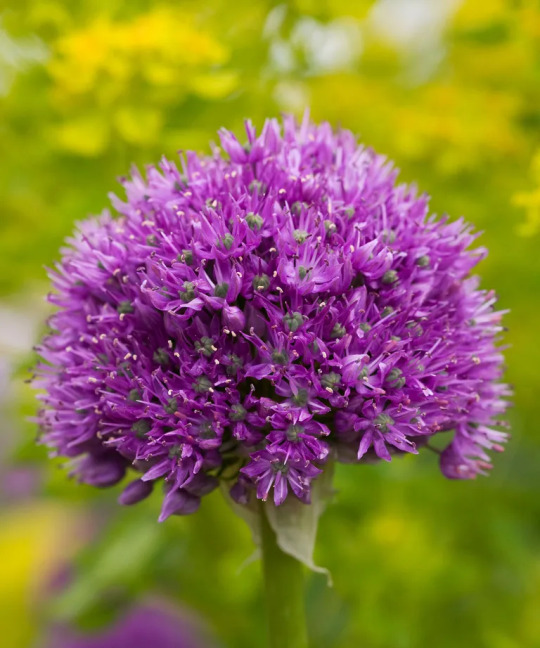

Allium are a genus of bulbs which include ornamental onions, chives, garlic and shallots. It is regarded by by many gardeners as a broad-spectrum natural pest repellent. Species in the allium family, notably garlic, emit a sulphureous odor that masks the smell of other plants but is undetectable to humans.
These plants are known to be deterrents for aphids, slugs, cabbage worms, and Japanese beetles. These plants are not particularly fussy about soil type, but do well in Sand and Loam, or any soil that is well drained.
Wormwood (Artemesia absinthium)


Wormwood is a handsome evergreen woody perennial with a strong sage-like odor that is purported to repel various pests such as earwigs, caterpillars, white fly, aphids, flies, and moths. The dried leaves themselves can also be used as a means to deter slugs and snails. However, they are susceptible to ground beetles.
Just as with Allium, wormwood prefer Sand and Loam, but will tolerate other soil types without much issue.
Thyme

While the aroma of thyme is favourable to humans, some bugs cannot stand the smell of it. Thyme is a great ground-cover plant that’s ideal at the front of borders and in containers and planters. It’s easy to grow provided it’s planted in a sunny situation and in free-draining soil – too much moisture will cause it to rot.
Mosquitos, cabbage loopers, tomato hornworms, and white flies in particular despise the scent of thyme.
Basil

Basil is a handy annual to have on hand that can deter various species of hornworm. Hornworms are notorious for their ability to completely defoliate plants like tomato, potato, tobacco, eggplants, and peppers. These too do well in well-drained soil such as Loam. As well as being a good pest deterrent in the vegetable garden, basil can easily be tucked into flower beds too. In particular, basil is paired with marigold for their colour.
However one downside of basil is that they are incredibly susceptible to slugs, especially as seedlings. It is advisable to avoid planting them after rains or colder conditions.
Marigold

In addition to keeping pests like flies and aphids away, marigolds also carry the benefit of attracting potential pollinators to the garden, such as hoverflies and pollen beetles.
Marigolds also make great decoy plants so are typically used for companion planting. If marigolds are grown near a more valuable plant, the slugs go for the young marigold plants first, which allows some time for other plants to develop and become less prone to slug attacks.
Catnip (Nepeta cataria)

Catmint (Nepeta) is a popular garden plant but studies show that it’s the true catmint (catnip) that does a good job of deterring many pests. It is a versatile plant, being able to be grown in a variety of soils, but it much prefers Loam. The main caveat is that whatever soil the plant is grown in, there must be a good drainage system.
Japanese beetles, aphids, Colorado potato beetles, mosquitoes, and the cabbage looper are among the many pests that catnip deters.
Hardy Geraniums

Hardy geraniums tolerate most soils and care little for specifics, although the general rule of thumb is to make sure the soil is loose. They’re very tolerant and will put up with dry or damp soil, sun or shade. They also happen to be a plant that slugs and snails hate, which are put off by their pungent, hairy foliage. Other perennial garden plants that slugs and snails are repelled by, include rosemary, ferns, lavender, foxglove and stachys.
Nasturtium

Nasturtium are a type of climber that are known to mainly repel whiteflies, squash bugs, beetles, and cabbage loopers. While it can survive most climates, they prefer Sand and Loam. They can be used as a trap crop,
Additionally, nasturtiums also attract hoverflies and beneficial wasps, and these critters can control all kinds of bad bugs.
Dill

Dill makes a good plant when grown as a companion to others such as Dahlia. It's often used as a trap crop which can be used to lure away certain pests from other plants. They are best used in repelling earwigs, cabbage moths, and spidermites, and prefer flourishing in moist, free-draining, fertile soils such as Silt and Loam.
The general consensus is that pests are often deterred by highly aromatic herbs and plants. Some other plants that repel pests are lavenders and mints, which contain the same aromatic properties of the other plants listed above.
0 notes